Silencing LINC00987 ameliorates adriamycin resistance of acute myeloid leukemia via miR-4458/HMGA2 axis
- PMID: 38910243
- PMCID: PMC11195003
- DOI: 10.1186/s13062-024-00490-1
Silencing LINC00987 ameliorates adriamycin resistance of acute myeloid leukemia via miR-4458/HMGA2 axis
Abstract
Background: Most patients with acute myeloid leukemia (AML) eventually develop drug resistance, leading to a poor prognosis. Dysregulated long gene non coding RNAs (lincRNAs) have been implicated in chemoresistance in AML. Unfortunately, the effects of lincRNAs which participate in regulating the Adriamycin (ADR) resistance in AML cells remain unclear. Thus, the purpose of this study is to determine LINC00987 function in ADR-resistant AML.
Methods: In this study, ADR-resistant cells were constructed. LINC00987, miRNAs, and HMGA2 mRNA expression were measured by qRT-PCR. P-GP, BCRP, and HMGA2 protein were measured by Western blot. The proliferation was analyzed by MTS and calculated IC50. Soft agar colony formation assay and TUNEL staining were used to analyze cell colony formation and apoptosis. Xenograft tumor experiment was used to analyze the xenograft tumor growth of ADR-resistant AML.
Results: We found that higher expression of LINC00987 was observed in AML patients and associated with poor overall survival in AML patients. LINC00987 expression was increased in ADR-resistant AML cells, including ADR/MOLM13 and ADR/HL-60 cells. LINC00987 downregulation reduces ADR resistance in ADR/MOLM13 and ADR/HL-60 cells in vitro and in vivo, while LINC00987 overexpression enhanced ADR resistance in MOLM13 and HL-60 cells. Additionally, LINC00987 functions as a competing endogenous RNA for miR-4458 to affect ADR resistance in ADR/MOLM13 and ADR/HL-60 cells. HMGA2 is a target of miR-4458. LINC00987 knockdown and miR-4458 overexpression reduced HMGA2 expression. HMGA2 overexpression enhanced ADR resistance, which reversed the function of LINC00987 silencing in suppressing ADR resistance of ADR/MOLM13 and ADR/HL-60 cells.
Conclusions: Downregulation of LINC00987 weakens ADR resistance by releasing miR-4458 to deplete HMGA2 in ADR/MOLM13 and ADR/HL-60. Therefore, LINC00987 may act as the therapeutic target for treating chemoresistant AML.
Keywords: Acute myeloid leukemia; Adriamycin; Long non-coding RNA; microRNA.
© 2024. The Author(s).
Conflict of interest statement
The authors declare no competing interests.
Figures
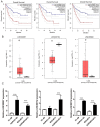
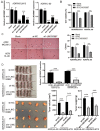

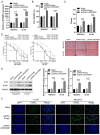
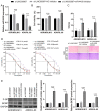
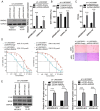
References
Publication types
MeSH terms
Substances
Grants and funding
- 2021A0505030034/Guang-dong Science and Technology Innovation Strategy Special fund (International science and technology cooperation projects)
- 2022B1111020003/Guangdong Provincial Science and Technology Program
- 82073748/National Natural Science Foundation of China
- 2019A1515011866/the Basic and Applied Basic Research Foundation of Guangdong Province
LinkOut - more resources
Full Text Sources
Medical
Research Materials
Miscellaneous

